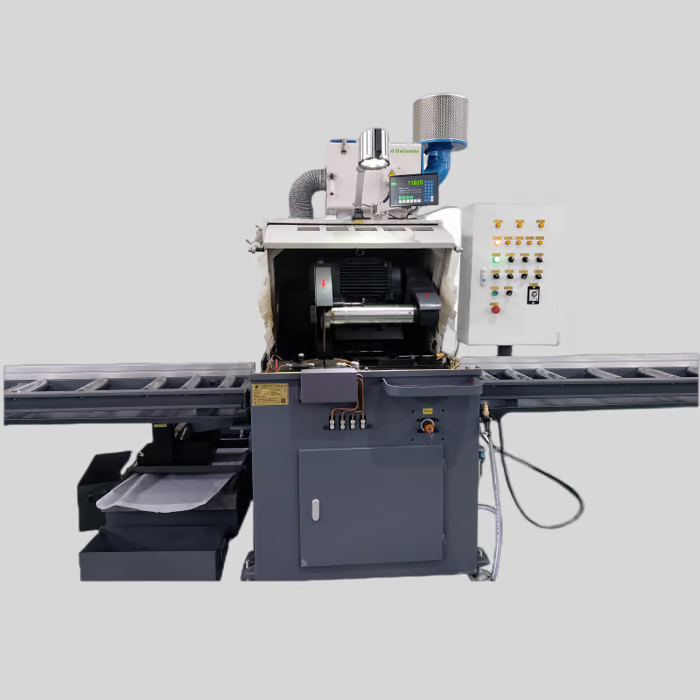Cutting machines employ various methods and technologies to ensure accuracy and repeatability when cutting linear guides. Achieving precise cuts is crucial for maintaining the dimensional integrity and functional performance of linear guide components. Here are the key ways cutting machines ensure accuracy and repeatability:
1. Computer Numerical Control (CNC) Technology:
- Precision Control: CNC cutting machines are equipped with computer-controlled systems that precisely dictate the movement of cutting tools or the material itself. This automation eliminates human error and ensures consistent accuracy across multiple cuts.
- Programmable Parameters: Operators can program specific cutting paths, speeds, and depths into the CNC system, allowing for precise execution of complex cutting tasks required for linear guides.
2. Laser Guidance and Positioning Systems:
- Laser Alignment: Some cutting machines use laser technology for alignment and positioning of materials or cutting heads. This ensures that cuts are made exactly where intended, minimizing deviations and errors.
- Automatic Calibration: Laser systems often include automatic calibration features that continually adjust positioning to compensate for any environmental changes or machine wear, maintaining accuracy over time.
3. High-Resolution Cutting Heads and Tools:
- Fine-Tuned Tools: Cutting machines equipped with high-resolution cutting heads or tools can achieve extremely precise cuts, even in materials with varying hardness or thickness.
- Tool Stability and Rigidity: Rigorous design and construction of cutting tools ensure stability and rigidity during operation, minimizing vibrations and maintaining cut quality.
4. Advanced Motion Control Systems:
- Servo Motors and Drives: Modern cutting machines use advanced servo motors and drives that offer precise control over the movement of cutting heads or material feed mechanisms. This results in smooth and accurate cutting motions.
- Feedback Systems: Closed-loop feedback systems continuously monitor and adjust cutting parameters based on real-time measurements, ensuring that each cut meets specified dimensional tolerances.
5. Integrated CAD/CAM Software:
- Design and Programming: CAD (Computer-Aided Design) software allows engineers to create detailed cutting designs and specify exact dimensions for linear guides. CAM (Computer-Aided Manufacturing) software translates these designs into machine-readable instructions for precise execution.
- Simulation and Optimization: Before actual cutting, CAM software can simulate cutting paths and identify potential issues, optimizing tool paths for maximum accuracy and efficiency.
6. Material Handling and Fixturing:
- Secure Fixturing: Properly securing linear guide components during cutting is essential for maintaining accuracy. Cutting machines often include fixtures or clamps designed to hold materials firmly in place, minimizing movement or shifting during cutting operations.
- Automated Material Feeding: Automated feeding systems ensure consistent positioning of materials, reducing variability between cuts and enhancing overall repeatability.
7. Calibration and Maintenance:
- Regular Calibration: Cutting machines undergo regular calibration and maintenance checks to ensure that all components remain in optimal working condition. This includes checking alignment, lubrication, and replacing worn parts to uphold accuracy over time.
- Operator Training: Proper training of operators in machine operation and maintenance procedures is critical to minimizing human error and maximizing the machine's accuracy potential.
In conclusion, cutting machines achieve accuracy and repeatability in cutting linear guides through a combination of advanced technologies such as CNC control, laser guidance, high-resolution tools, precise motion control, integrated software solutions, secure fixturing, and diligent maintenance practices. These factors collectively contribute to producing precise, high-quality linear guide components that meet stringent dimensional specifications and performance requirements in various industrial applications.

